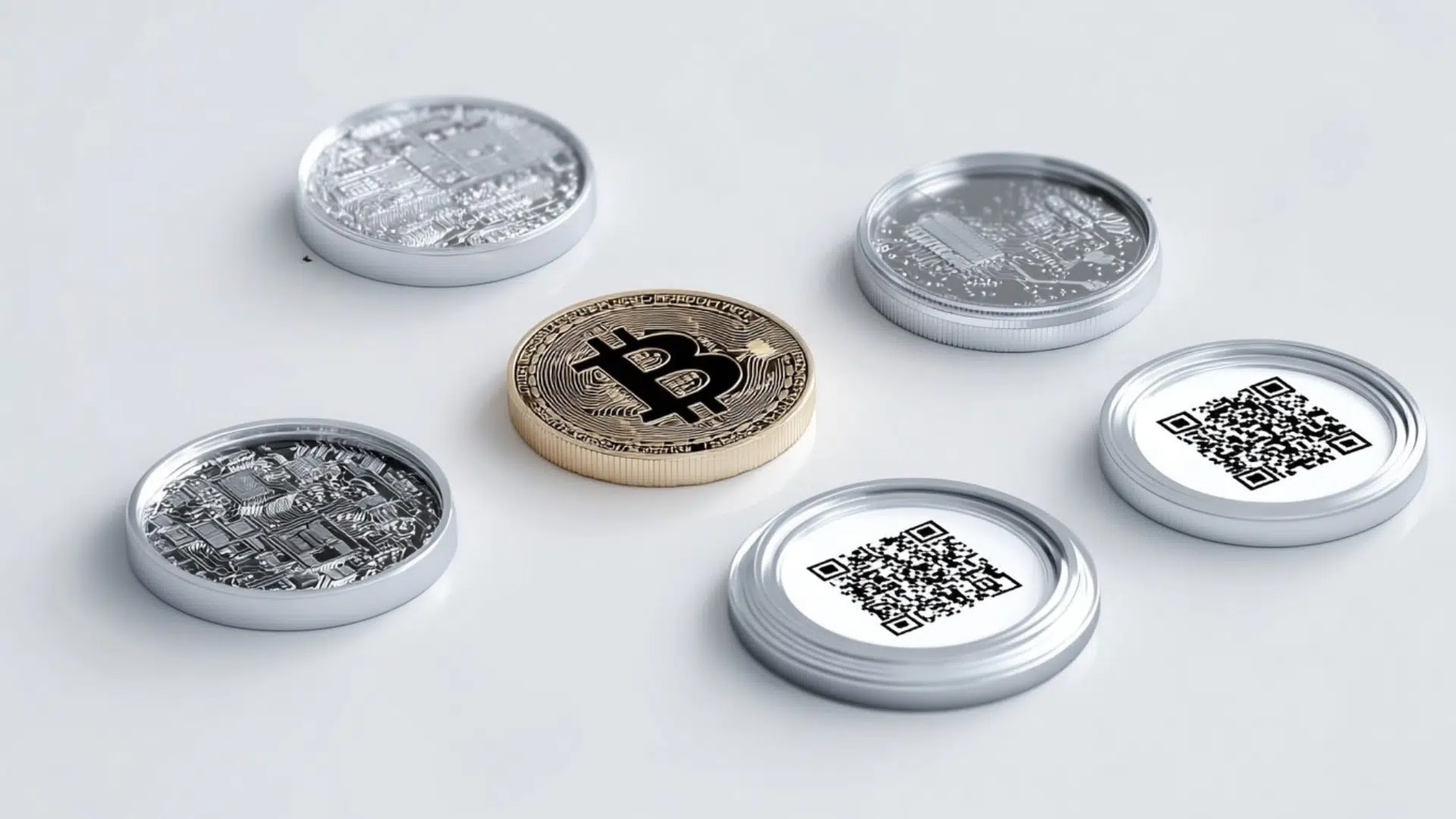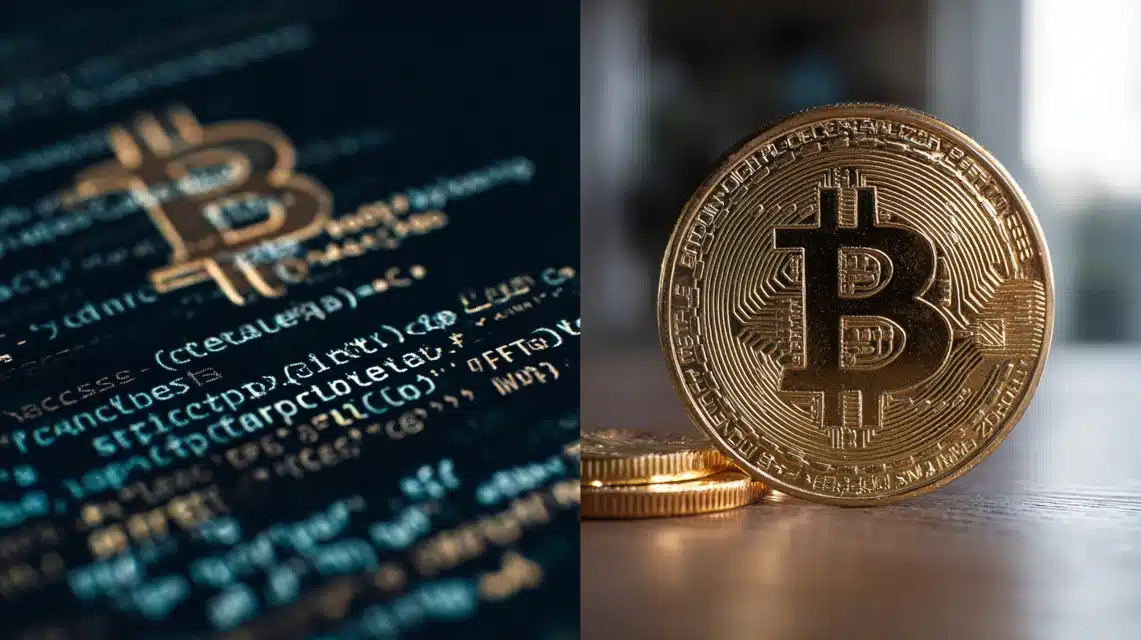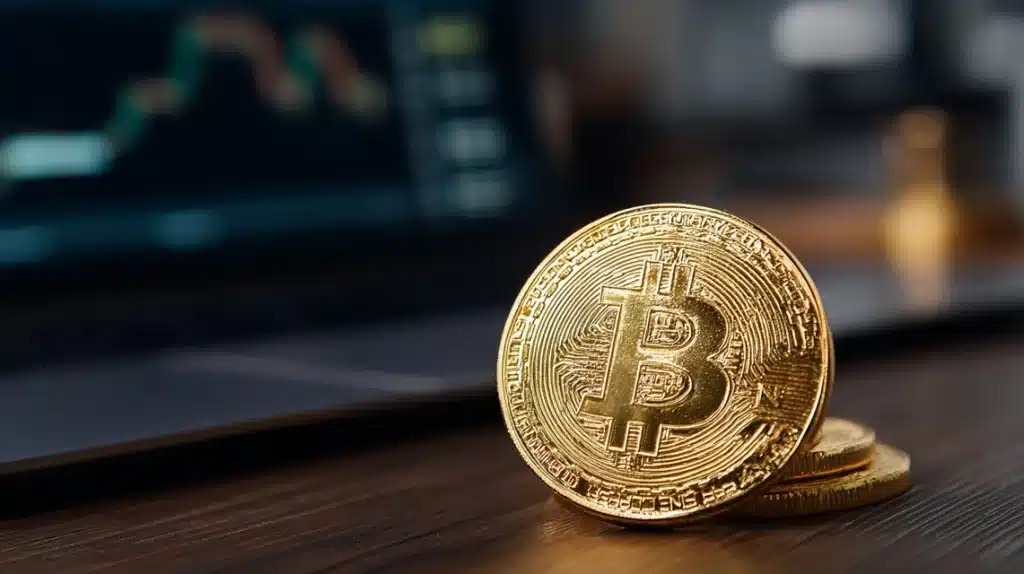When I first heard about physical Bitcoin, I imagined a shining gold coin resting in someone’s hand, a real object for something that only exists online.
Maybe you’ve seen those photos too and wondered if Bitcoin ever truly had a physical form. It’s a fair question because crypto often feels intangible, made up of digital wallets, codes, and blockchain records.
That curiosity led to the creation of physical Bitcoins, coins that combine art, security, and technology to represent digital value you can actually hold. They connect the abstract world of cryptocurrency with something real and collectible.
In this blog, you’ll learn what physical Bitcoins are, how they work, what makes them valuable, and why they’re gaining attention again in 2025.
This blog is for informational purposes only and does not provide financial, investment, or trading advice. The details shared about Bitcoin, collectibles, and related technologies are based on publicly available information and general research. Always conduct your own due diligence or consult a licensed financial advisor before making any investment or purchasing decisions.
Does a Physical Version of Bitcoin Really Exist?
The short answer is yes, but not in the way most people imagine. Bitcoin itself exists only in digital form, stored on the blockchain as code rather than coins.
Every transaction is verified publicly on this network, ensuring ownership without needing banks or middlemen. That’s what makes Bitcoin decentralized, transparent, and secure.
Still, companies like Casascius, Tangem, and Ballet Crypto have created physical versions that represent Bitcoin ownership. These coins or cards hold private keys linked to real BTC wallets, blending technology and art into tangible collectibles.
However, they aren’t spendable currency. The real Bitcoins remain entirely digital, moving securely between wallets online.
Physical versions are symbolic, designed to make the concept of digital money feel real and to celebrate its history as the world’s first decentralized currency.
What Exactly is a Physical Bitcoin


A physical Bitcoin is a real-world object that represents digital Bitcoin ownership through built-in private keys and security features.
A Tangible Representation of Digital Value
A physical Bitcoin, such as a Casascius coin, looks like a gold token engraved with a hologram that hides a private key. Early Bitcoin users liked these coins because they made digital money feel real.
Holding something solid gave them a stronger connection to value and made it easier to gift or display. Collectors still enjoy them today for that same reason; they’re a visual link to Bitcoin’s early days, when digital money was just starting to gain trust.
How Physical Bitcoins Work
Each physical Bitcoin contains a private key hidden beneath a tamper-proof hologram. That key connects directly to a digital wallet on the blockchain. When someone peels off the hologram, they reveal the key and can move the Bitcoin to another wallet.
The coin then becomes a collectible only. Casascius founder Mike Caldwell created them as secure “cold storage” tools, combining tangible design with digital protection.
Loaded vs Unloaded Coins
Physical Bitcoins fall into two categories: loaded and unloaded. Loaded coins have actual Bitcoin stored in their embedded wallets, like a 1 BTC Casascius coin from 2011, still redeemable today.
Unloaded coins, such as Tangem cards, hold no Bitcoin but work as secure wallets or display pieces. Collectors value loaded coins more because they carry both historical and digital worth.
| Factor | Loaded Coin | Unloaded Coin |
|---|---|---|
| Value | Holds real BTC | Collectible only |
| Risk | Lose BTC if the hologram is damaged | No financial risk |
| Origin | Early Casascius, limited issues | Modern replicas, souvenirs |
Key Features of a Physical Bitcoin
Physical Bitcoins are designed with specific parts that protect digital value, verify authenticity, and make the concept of Bitcoin tangible.
1. Design and Components
A physical Bitcoin includes several key parts: a hologram, QR code, and serial ID. The hologram seals the private key inside and provides tamper protection. The QR code allows anyone to look up the wallet address and verify the Bitcoin balance.
The serial ID gives each coin traceability and authenticity. These coins are made using metal stamping, engraving, and hologram application to ensure precision and durability.
2. Embedded Security
The security of a physical Bitcoin comes from storing the private key offline, far from digital access or hacking risks.
Once the hologram seal is peeled, it cannot be resealed, showing clear signs of tampering. This ensures the coin’s integrity and helps prevent fraud.
When buying, always check for original holograms, avoid unverified sellers, and never share photos that might expose private keys or QR codes. Proper handling keeps both value and authenticity intact.
3. Popular Brands and Designs
Several brands have made physical Bitcoins with unique security and design features.
| Brand | Years Active | Storage Type | Key Feature | Regulatory Status |
|---|---|---|---|---|
| Casascius | 2011–2013 | Loaded BTC | Original hologram coin | Discontinued by FinCEN |
| Ballet Crypto | 2019–Present | Unfunded cold wallet | Multicurrency support | Legal, U.S.-based |
| Tangem | 2018–Present | Smartcard wallet | NFC-based convenience | Legal, Switzerland |
Each design reflects a different stage in Bitcoin’s evolution—from early collectible coins to modern, secure wallet cards.
A Brief History of Physical Bitcoins
Physical Bitcoins have evolved over more than a decade, marking important milestones in crypto history.
Mini Timeline (2011–2025):
- 2011: Casascius coins introduced by Mike Caldwell as the first physical Bitcoins containing real BTC.
- 2013: Production halted after the Financial Crimes Enforcement Network (FinCEN) intervened, citing anti–money laundering and KYC concerns over loaded coins.
- 2018:Tangem launched smartcard-style NFC wallets, blending convenience with physical storage.
- 2019:Ballet Crypto emerged, offering secure, non-loaded physical wallets for collectors.
- 2025: Growth of 3D-printed and commemorative designs celebrating Bitcoin’s legacy.
Regulators stopped accepting loaded coins because transferring Bitcoin through physical objects bypassed identification laws.
Despite these restrictions, early coins remain cultural artifacts within the crypto community, symbols of Bitcoin’s origin and the desire to make digital money tangible.
Some are now displayed in museums or private collections as reminders of blockchain’s beginnings.
How Physical and Digital Bitcoin Differ


Digital Bitcoin and physical Bitcoin may share a name, but they serve entirely different purposes.
Digital Bitcoin exists only on the blockchain and holds real economic value; it can be traded, split into smaller units called satoshis, and moved across the world in seconds. This makes it both functional and fluid as a form of currency.
Physical Bitcoins, on the other hand, cannot be divided or easily transferred. They carry psychological and collectible appeal rather than direct financial use.
A famous example is the 1 BTC Casascius coin, which started as a piece of digital money stored inside a physical token and is now worth far more as a collector’s item than its original Bitcoin balance.
In essence, digital Bitcoin drives markets and transactions, while physical Bitcoins preserve a piece of early crypto history and offer tangible proof of the digital concept.
Are Physical Bitcoins Worth Anything?
The value of a physical Bitcoin depends on what it holds and where it comes from. A loaded coin, which contains real Bitcoins, has an intrinsic digital value equal to the BTC stored inside.
Beyond that, many coins also have collector value, especially older ones like Casascius coins made between 2011 and 2013. Their limited production and connection to Bitcoin’s early history make them highly sought after.
In contrast, the metal or material value of these coins is usually small. As of 2025, loaded Casascius coins often sell for between $50,000 and $100,000, depending on rarity and condition; a few have even exceeded $80,000 at auction.
Factors such as design, reputation, and the remaining BTC balance all affect their worth. However, be cautious: many replicas or imitation coins sold online have no real Bitcoin attached, making them collectibles with little or no financial value.
How to Verify a Physical Bitcoin
Verifying a physical Bitcoin helps confirm its authenticity, security, and whether it truly holds digital value on the blockchain.
Steps to Verify Your Physical Bitcoin
Step 1: Inspect the hologram or tamper-proof seal. If the private key is broken or scratched, it may have been exposed or compromised.
Step 2: Find the public address printed on the coin. Use a blockchain explorer to check its balance and transaction history.
Step 3: Look for details like weight, texture, and hologram quality. Real coins have fine engraving, clear text, and consistent weight.
Step 4: The private key is under the hologram. Never peel it unless you plan to redeem the Bitcoin; it lowers collector value.
Step 5: Research the issuer’s credibility. Casascius and Ballet are known for secure, authentic coins; many others sell replicas.
Step 6: Confirm that the denomination, issue year, and serial number match the manufacturer’s records. Mismatched details could signal tampering.
Step 7: Visit trusted explorers like Blockchain.com, Blockstream.info, or BTCscan.org to confirm unspent balance and linked transactions.
Step 8: If a QR code is damaged, manually enter the address. If invalid, it’s likely fake. Missing private key = no value.
Understand the Digital Link
Each physical Bitcoin connects to a blockchain address through a pair of keys: the public key, visible to everyone, and the private key, hidden inside the coin.
The public key shows proof of ownership, while the private key lets you move or spend the Bitcoin. Blockchain transparency makes this link verifiable by anyone.
Once the Bitcoin is redeemed using the private key, the coin loses its digital balance and becomes a collectible only, no longer tied to real Bitcoin value.
Common Risks of Owning Physical Bitcoins
Owning physical Bitcoins involves security and handling risks that can reduce their value or result in total loss of funds.
- Damage to the Hologram: Even minor scratches or peeling can expose the private key, making the Bitcoin inside unusable or compromised.
- Loss or Misplacement: If you lose the coin, you lose access to the Bitcoin wallet forever; there’s no recovery option.
- Exposure of Private Key: Revealing or photographing the private key allows anyone to steal the Bitcoin linked to that address.
- Market Fluctuations: Collector value changes quickly; what’s worth thousands today could drop sharply if demand falls.
- Storage Risks: Improper storage, humidity, or handling can tarnish metal coins and damage embedded security features.
Scams to Owning Physical Bitcoins
The market for physical Bitcoins also faces counterfeit schemes and fraud that trick buyers with fake designs or misleading claims.
- Counterfeit Coins: Many fakes use cheap materials and copied designs that mimic real Casascius or Ballet coins.
- Fake Holograms: Scammers use holograms that look genuine but don’t conceal valid private keys or link to real Bitcoin wallets.
- Reused Serial Numbers: Fraudsters clone serial IDs from real coins to create replicas that appear authentic to new buyers.
- Unrealistic Pricing: If a deal seems too good to be true, it probably is. Scammers often use low prices to attract victims.
- Online Photo Theft: Posting clear photos of holograms or private keys online can let scammers drain your Bitcoin instantly.
- Fake Sellers or Websites: Always buy from verified platforms or trusted collectors; fake stores and sellers are a growing issue.
The Future of Physical Bitcoin
The next generation of physical Bitcoins is moving beyond collectibles into smart, verifiable technology.
New prototypes are expected to feature AI-driven authentication, which scans holograms or QR codes to confirm legitimacy without exposing private keys.
Many will include NFC chips and blockchain-linked certificates, making ownership records tamper-proof and traceable.
Another emerging trend is the creation of digital twins, NFT counterparts that mirror each physical coin’s identity on-chain, giving collectors a transparent record of authenticity and transfer.
Manufacturers are also experimenting with eco-friendly metals, 3D printing, and recyclable packaging, reducing environmental impact.
In the long run, physical Bitcoins may connect with digital identity systems, letting users verify ownership through secure chips tied to their profiles.
While these coins won’t replace digital Bitcoin, they’ll remain powerful symbols of trust, bridging cryptocurrency’s origin with the sustainable, tech-driven future of decentralized finance.
Conclusion
I hope this helped you see that physical Bitcoin isn’t real currency but a creative way to represent something fully digital. You now know how these coins work, what makes them valuable, and how to spot real ones from fakes.
The truth is, the real power of Bitcoin lies in its digital form, fast, traceable, and secure across borders. Still, physical versions remind us how people tried to make digital money feel real.
If you ever come across one, treat it like a piece of crypto history. Stay curious, stay cautious, and keep learning. There’s so much more to find out about the world of digital currency and how it continues to evolve.

